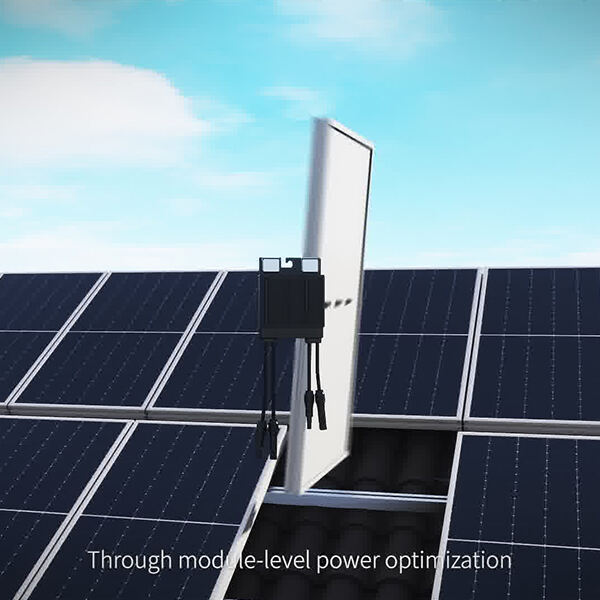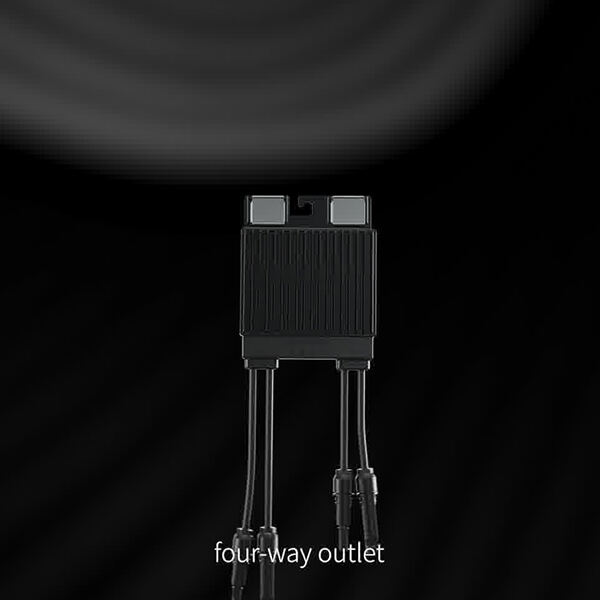Driving Solar Efficiency to New Heights
In the fast-evolving world of renewable energy, technology plays a crucial role in making solar systems more effective and profitable. Beyond choosing high-quality panels, the way each panel operates can greatly impact the total energy harvested. This is where the optimizer becomes indispensable. Acting as the intelligent link between the panel and the inverter, an optimizer ensures that each module operates independently at its best possible output, reducing losses from environmental challenges and technical limitations. Over time, this translates into higher energy production, more consistent performance, and a better return on investment.
Understanding the Function of the Optimizer
Panel-Level Performance Management
An optimizer ensures that every panel in a solar array operates at its own maximum power point. Without such a device, panels connected in series are limited by the lowest-performing module. Even a single panel affected by shade, dirt, or damage can drag down the performance of the entire string. With an optimizer, this bottleneck is eliminated, and each panel contributes its full potential to the system output.
The result is a more resilient energy system that delivers steady production, even in less-than-ideal conditions. This difference is especially noticeable in installations where roof layouts or surrounding objects create irregular sunlight patterns.
Real-Time Energy Adjustment
The optimizer constantly monitors voltage and current to make rapid adjustments in real time. This continuous optimization allows each panel to respond instantly to changes in sunlight, temperature, and shading. Whether a cloud passes overhead or part of the roof falls into shade, unaffected panels continue operating at peak performance.
This adaptability means energy production is maximized throughout the day, regardless of fluctuating environmental conditions.
How the Optimizer Enhances Energy Output
Managing Partial Shading
Shading is one of the biggest challenges in solar energy production. A single shaded panel can disproportionately affect system output when there is no panel-level control. The optimizer limits the impact of shading by isolating it to the affected module, allowing the rest of the array to function at full capacity.
Over time, this ability to contain performance losses results in significantly higher annual energy yields compared to systems without such technology.
Compensating for Mismatch Losses
Not all solar panels in a system are perfectly identical in performance. Variations in manufacturing, aging rates, or even panel orientation can lead to mismatch losses. The optimizer counteracts this by adjusting the operation of each panel individually.
This ensures that slight differences between modules do not compound into major performance drops, keeping total output closer to the system’s theoretical maximum.

Economic Advantages of the Optimizer
Improved Return on Investment
By increasing total energy generation, the optimizer directly boosts the financial returns of a solar installation. Whether the system is designed for self-consumption or for selling excess energy to the grid, more production translates into greater savings or revenue.
Over a system’s lifespan, the incremental daily gains provided by the optimizer add up to substantial long-term benefits, often justifying the initial investment within a few years.
Lower Operational Costs
Many optimizers are equipped with monitoring functions that allow system owners to track performance at the panel level. This visibility simplifies maintenance by enabling precise fault detection. When an issue arises, technicians can quickly identify and repair the affected module without costly trial-and-error inspections.
By catching issues early, the optimizer also prevents small problems from escalating into larger, more expensive repairs.
Technical Innovations Behind the Optimizer
Maximum Power Point Tracking Technology
At the core of every optimizer is Maximum Power Point Tracking (MPPT). This advanced algorithm continually adjusts the operating point of each panel to ensure maximum energy extraction under current conditions. Unlike central MPPT in string inverters, panel-level MPPT in an optimizer provides a much more precise and effective optimization process.
This high-resolution control is the foundation for the optimizer’s ability to deliver consistent performance gains.
Integration with Various System Designs
Optimizers are compatible with a wide range of panel types and inverter models, making them suitable for different project sizes and configurations. They can be installed during initial system construction or retrofitted into an existing setup to enhance performance.
This flexibility allows system owners to adopt the technology without significant design limitations.
Long-Term Performance and Reliability
Sustaining Energy Output Over Decades
Solar panels typically have a lifespan of 25 years or more, but their output can degrade over time. The optimizer minimizes the effects of this natural degradation by keeping each panel performing at its best possible level throughout its lifetime.
By doing so, it helps ensure that the system continues to deliver strong, reliable production even in its later years.
Preparing for Future Energy Solutions
As the renewable energy industry evolves, new technologies such as advanced inverters, battery storage, and smart grid integration become more common. The optimizer’s design often allows it to adapt to these changes, ensuring compatibility with future upgrades and innovations.
This future-proof approach adds to the long-term value of an optimized solar installation.
Selecting the Right Optimizer Solution
Matching Technology to Site Conditions
Not every solar site faces the same challenges, and the choice of optimizer should reflect specific conditions. Systems in shaded or irregular sunlight conditions often gain the most from panel-level optimization. For sites with ideal sunlight exposure, fewer devices may be needed to achieve efficiency goals.
A tailored approach ensures that the optimizer is used where it delivers the greatest benefit.
Prioritizing Quality and Durability
Since the optimizer operates in outdoor environments, durability is key. High-quality devices are built to withstand temperature extremes, moisture, and other environmental stresses without compromising performance. Choosing a well-engineered product helps guarantee that optimization benefits are sustained for decades.
Investing in proven, reliable technology safeguards both performance and financial returns.
FAQ
What is the main role of an optimizer in a solar system?
An optimizer maximizes the output of each solar panel by ensuring it operates at its maximum power point independently, preventing weaker panels from affecting the performance of the entire array.
Can an optimizer improve energy output in perfect sunlight conditions?
Yes, even in optimal conditions, minor variations between panels can cause performance losses. The optimizer minimizes these losses, ensuring total output is as close as possible to the system’s maximum potential.
Does an optimizer require maintenance?
Optimizers are generally low-maintenance devices, but their monitoring functions can help detect system issues early, making overall system upkeep easier and more cost-effective.
Can I add an optimizer to an existing solar system?
Yes, optimizers can often be retrofitted to existing systems, improving performance and enabling panel-level monitoring without major redesigns.

